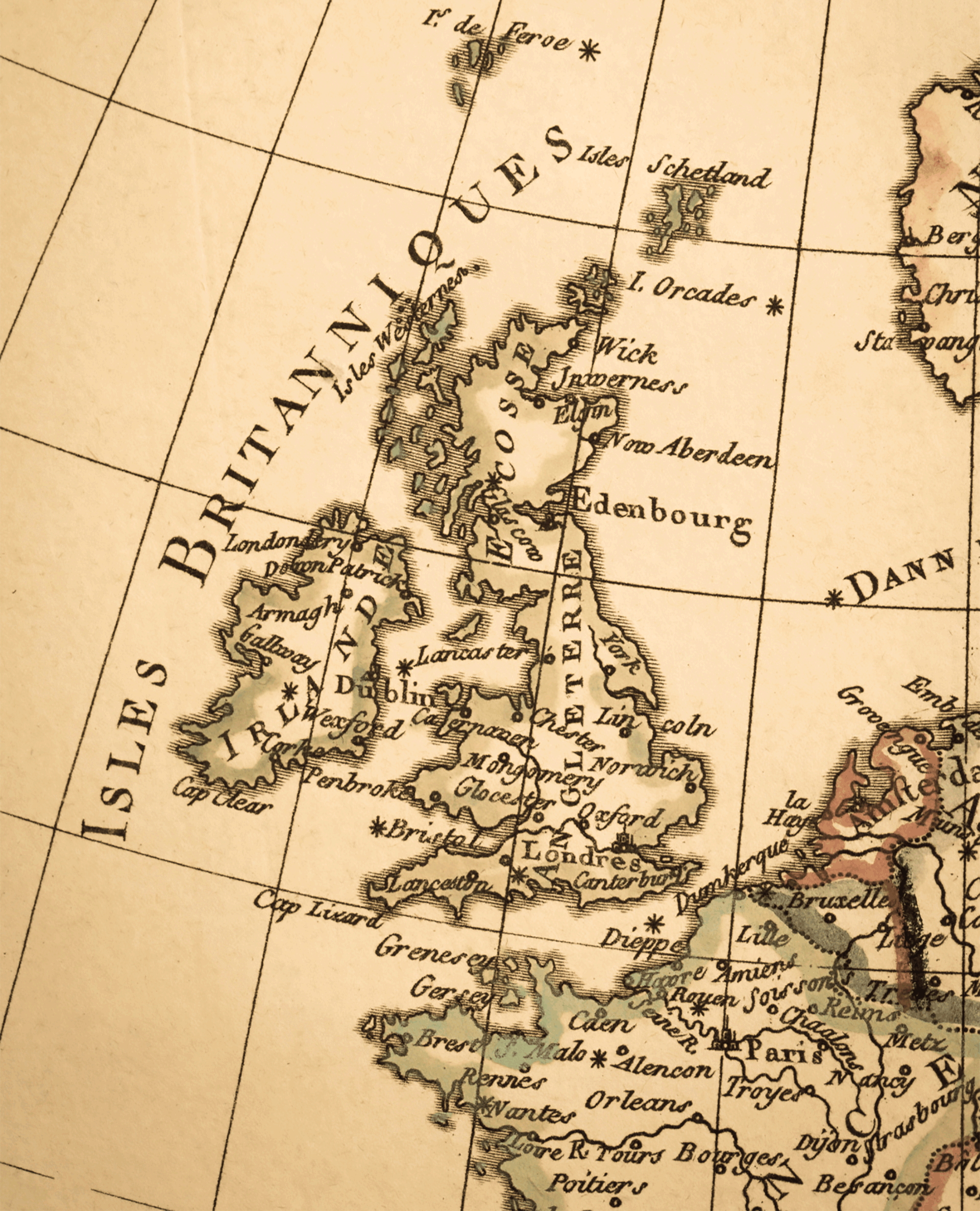
By the 1120s, the St Clairs had significant land holdings in southern England. They later became quite influential in Scotland.
SCROLL UP this map to tie the family narrative to geography and to better understand the path of our family’s expansion from Normandy, into England, and up to Scotland.

Sources –
Bennett, James Arthur “Report on the Manuscripts of Wells Cathedral, Volume 10, Part 3” Printed by Eyre and Spottiswoode, 1885
Daub, Mrs. St. Claire Lappe, “The Sinclaire Family of Belfast N. Ireland And Their Descendants, 1660-1964.” This is a hand-typed copy of a book by Mrs Daub which I found in the New York City public library at 42nd Street and 5th Avenue. Photocopies of book in possession of Steve St. Clair.
Dunbar, Sir Archibald Hamilton, “Scottish Kings: A Revised Chronology of Scottish History, 1005-1625”
Encyclopedia Britannica, website https://www.britannica.com/place/Kalmar-Union Accessed 30 December 2017
Essex, “Transactions of the Essex Archaeological Society, Volume 7” Published by the Society at the Museum in the Castle., 1900
Eyton, Robert William V-1 “Domesday Studies: An Analysis and Digest of the Somerset Survey (According to the Exon Codex), and of the Somerset Gheld Inquest of A.D. 1084, as Collated with, and Illustrated by Domesday” Reeves & Turner, 196, Strand, & 100, Chancery Lane, 1880
Golding, Brian, “The Coming of the Cluniacs,” A paper published in Proceedings of the Battle Conference on Anglo-Norman Studies: 1980. III Boydell & Brewer, 1981 ISBN 0-85115-142-6
Green, Judith A., “The Aristocracy of Norman England,” Published by the Press Syndicate of the University of Cambridge, 1997 ISBN 0 521 33509 4
Green, Judith A. “The Government of England Under Henry I,” Published by the Press Syndicate of the University of Cambridge, 1986 ISBN 0 521 37586 X
Keats-Rohan, K.S.B. V-1 “Prosopography of persons occurring in English documents, 1066-1166, Volume 1,” Boydell & Brewer Ltd, 1999
Keats-Rohan, K. S. B. V-2, “Domesday Descendants: A Prosopography of Persons Occurring in English Documents 1066-1166 II: Pipe Rolls to `Cartae Baronum’ “ (Vol 2) (Hardcover), by K.S.B. Keats-Rohan, Boydell Press (April 15, 2002) ISBN-10: 0851158633, ISBN-13: 978-0851158631
Keats-Rohan, K.S.B. Paper – “Domesday Book and the Malets: patrimony and the private histories of public lives,” 1996 Printed Nottingham Medieval Studies 41 (1997) 13-56.
Loyd, Lewis C., “Origins of Some Anglo-Norman Families,” edited posthumously by Charles Travis Clay, Genealogical Publishing Co., Inc. Baltimore 1975 ISBN 0-8063-0649-1
Me, Rondo B.B. and Gerald Sinclair, “The Enigmatic Sinclairs,” St. Clair Publications, 2015 ISBN 978-1-935786-99-3
Note: This resource is so thoroughly researched, it’s the only one I use for the significant events of our family in Scotland.
Oram, Richard, “David I, the King Who Made Scotland” The History Press Ltd., 2008 ISBN: 978 7509 4672 1
PoMS-Fidra, H3/586/4 http://db.poms.ac.uk/record/source/5482 accessed 12 December 2017
Sinclair, Antonia, “The Mysterious Sinclairs of Argyllshire,” A website article for the St Clair Research website.
Sinclair, Peter, “Medieval Walkern and Magna Carta,” Walkern History Society 2013 ISBN: 9780957628601
Somerset Record Society Vol. VIII “Two Cartularies of the Augustinian priory of Bruton and the Cluniac priory of Montacute in the country of Somerset,” Harrison and Sons Printers, London 1894
Stackpole, Everett S., “History of New Hampshire,” 1850 ISBN-10: 1363009834 ISBN-13: 978-1363009831
Stubbs, William, D.D. “Select Charters and Other Illustrations of English Constitutional History: From the Earliest Times to the Reign of Edward the First, Sixth Edition,” Clarendon Press, 1888
Wace, Glyn S Burgess; Elisabeth M C Van Houts, “The History of the Norman People : Wace’s Roman de Rou” Boydell Press, 2004 ISBN 1 84383 007 8
Wales – “Castle of Wales” website – http://www.castlewales.com/stclears.html

